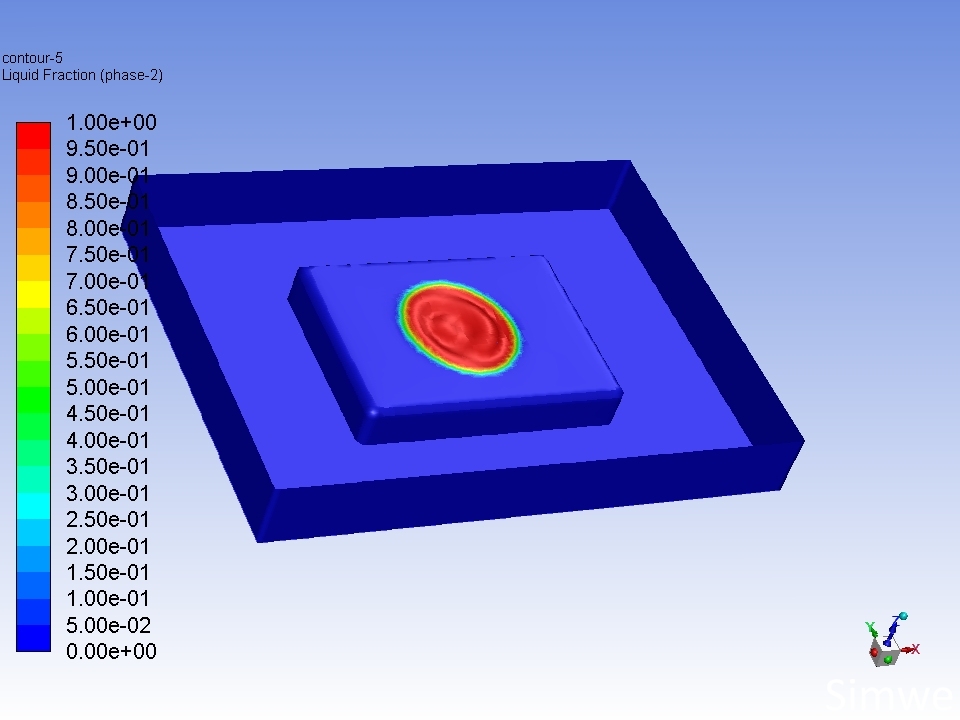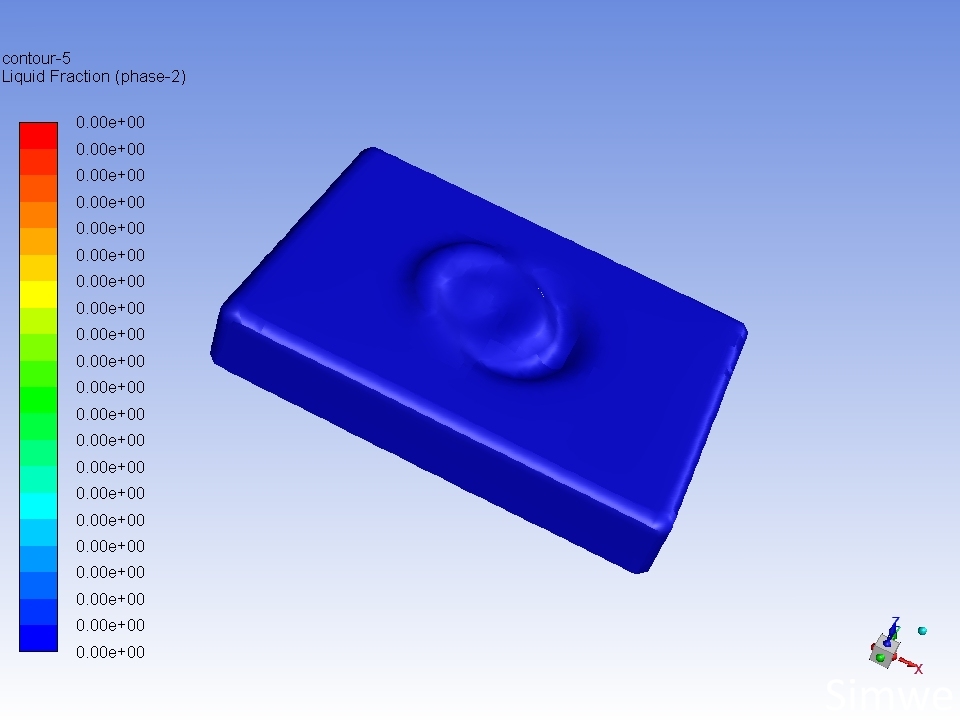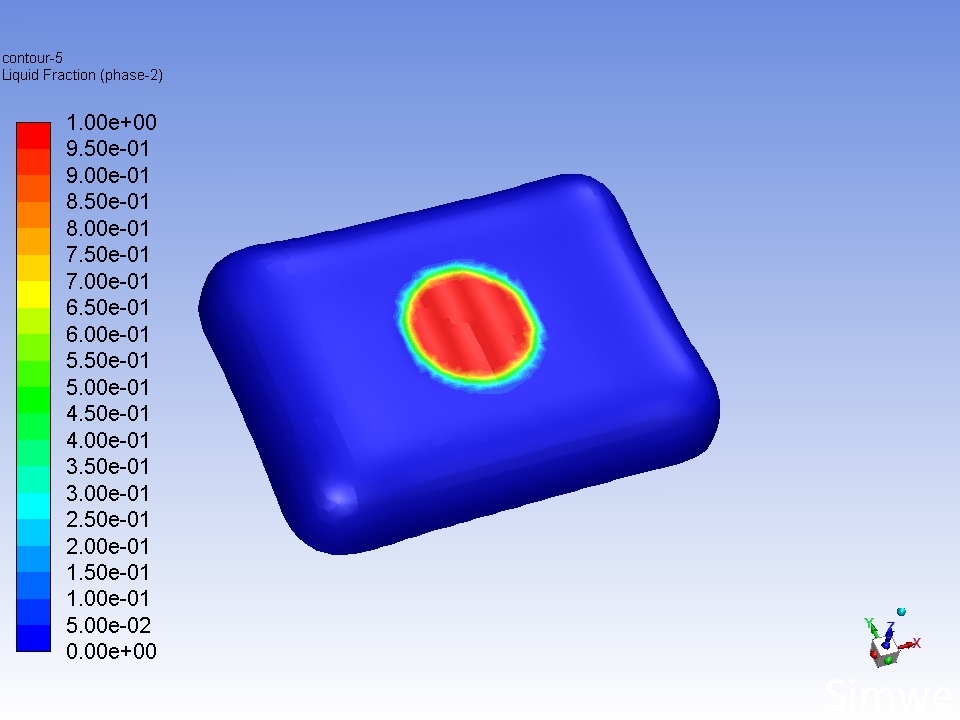 |
|
|
[Sponsors] | |||||
surface tension problem when using VOF+Solidification&melting models |
 |
|
|
LinkBack | Thread Tools | Search this Thread | Display Modes |
|
|
|
#1 |
|
New Member
Yiqi Feng
Join Date: Jul 2017
Location: China
Posts: 5
Rep Power: 9  |
Hi everyone,
I'm modeling the process of selective laser melting using FLUENT. I built a simple model to domenstrate my code and setting. The VOF and Solidification&Melting models are implented in my model. Firstly, I built a model without the surface tension. I used the DEFFINE_INIT to set a cuboid space into the center of the computational domain.  The laser will irradiate the surface of the cuboid for 0.0015s and then stop irradiatting. The molten pool at 0.0015s like this:  The thermal field like this:  After solidificating, a surface will appear  But the problem is, when I add surface tension coefficients into the phase interaction dialog box of VOF, the result was ridiculous that the solid area begin to move like the picture below.  As the description in the Fluent Theory Guide, the addition of surface tension to the VOF calculation results in a source term in the momentum equation. But when we use the solidification&melting model, there is a momentum sink adding to the momentum equation. So theoretically the solid area can't move. I really don't know how to fix it. Maybe there are other methods to model the effect of surface tension, can u tell me where the mistake is. I am really confused for a long time, and this simulation is very important to my thesis. I really need your help. Thank you! |
|
|
|

|
|
|
|
|
#2 |
|
New Member
Join Date: Jul 2014
Location: USA
Posts: 5
Rep Power: 12  |
Hi Yiqi Feng,
I am also modeling the process of selective laser melting using Ansys fluent. Make sure to use the energy model during your simulation. What boundary conditions are you using? |
|
|
|

|
|
|
|
|
#3 | |
|
New Member
Yiqi Feng
Join Date: Jul 2017
Location: China
Posts: 5
Rep Power: 9  |
Quote:
Thank you for your reply. I have uesd the energy model. The boundary condition is discribed like the picture below: There is also a "top" wall, whose boundary condition is outflow, but it isn't showed in the picture. |
||
|
|

|
||
|
|
|
#4 |
|
New Member
Join Date: Jul 2014
Location: USA
Posts: 5
Rep Power: 12  |
Hi Yiki,
What are the material phases in your VOF model? I mean what type of material are you considered for layers and substrate? You should consider temperature dependent properties in your model. |
|
|
|

|
|
|
|
|
#5 |
|
New Member
Join Date: Dec 2023
Posts: 5
Rep Power: 2  |
Hi Alvin, I am currently conducting a project similar to yours in which I have to perform laser cutting on a solid. However, when I conduct the simulation the heated zone bulges and does not melt. Is there any settings that has to be enabled or altered for me to be able to observe the molten pool?
|
|
|
|

|
|
 |
| Tags |
| solidification/melting, surface tension, vof |
|
|
 Similar Threads
Similar Threads
|
||||
| Thread | Thread Starter | Forum | Replies | Last Post |
| UDF for variable surface tension on VOF | OmarEGB | FLUENT | 3 | June 18, 2022 01:08 |
| How to add Surface Tension in cavitatingFoam solver | jamestangx | OpenFOAM Programming & Development | 1 | April 6, 2016 16:39 |
| surface tension in VOF | sharonyue | OpenFOAM Running, Solving & CFD | 4 | October 20, 2013 20:40 |
| Inconstant Surface Tension on Interface in VOF | Atieh | FLUENT | 0 | February 9, 2007 02:37 |
| Surface tension in VOF | chapelle | FLUENT | 0 | October 31, 2005 02:27 |